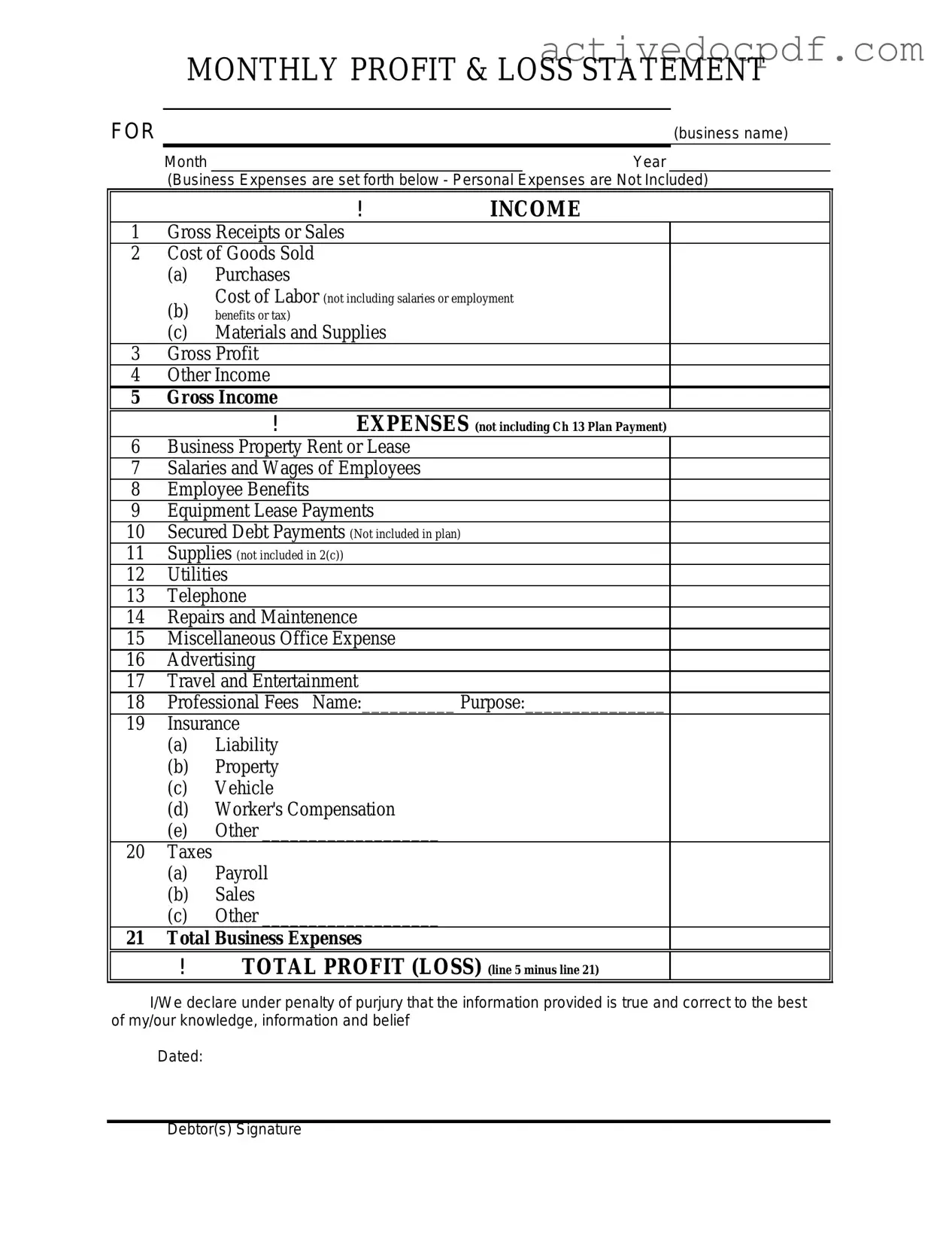A Profit and Loss form, often referred to as an income statement, summarizes the revenues, costs, and expenses incurred during a specific period. This document provides a clear picture of a company's financial performance, showing whether it has made a profit or a loss during that time frame.
The Profit and Loss form is crucial for several reasons:
-
It helps business owners and stakeholders assess profitability.
-
It provides insights into revenue trends and expense management.
-
It aids in financial planning and forecasting for future periods.
-
It is often required by lenders and investors when evaluating a business's financial health.
A typical Profit and Loss form includes the following sections:
-
Revenue:
Total income generated from sales or services.
-
Cost of Goods Sold (COGS):
Direct costs associated with producing goods or services sold.
-
Gross Profit:
Revenue minus COGS.
-
Operating Expenses:
Costs incurred in the normal course of business, such as rent, utilities, and salaries.
-
Net Profit or Loss:
The final figure after subtracting total expenses from total revenue.
Businesses typically prepare Profit and Loss forms on a monthly, quarterly, or annual basis. The frequency may depend on the size of the business, industry practices, and specific management needs. Regular preparation helps track financial performance and make timely adjustments as necessary.
Yes, the Profit and Loss form can be used for tax purposes. It provides a summary of income and expenses, which is essential for calculating taxable income. However, it is important to ensure that the form aligns with the accounting methods used for tax reporting to avoid discrepancies.
How can I improve my Profit and Loss results?
Improving Profit and Loss results can be approached in several ways:
-
Increase revenue through marketing strategies, upselling, and expanding product lines.
-
Reduce costs by evaluating suppliers, renegotiating contracts, and streamlining operations.
-
Monitor expenses regularly to identify areas for savings.
-
Implement financial controls to prevent unnecessary spending.
